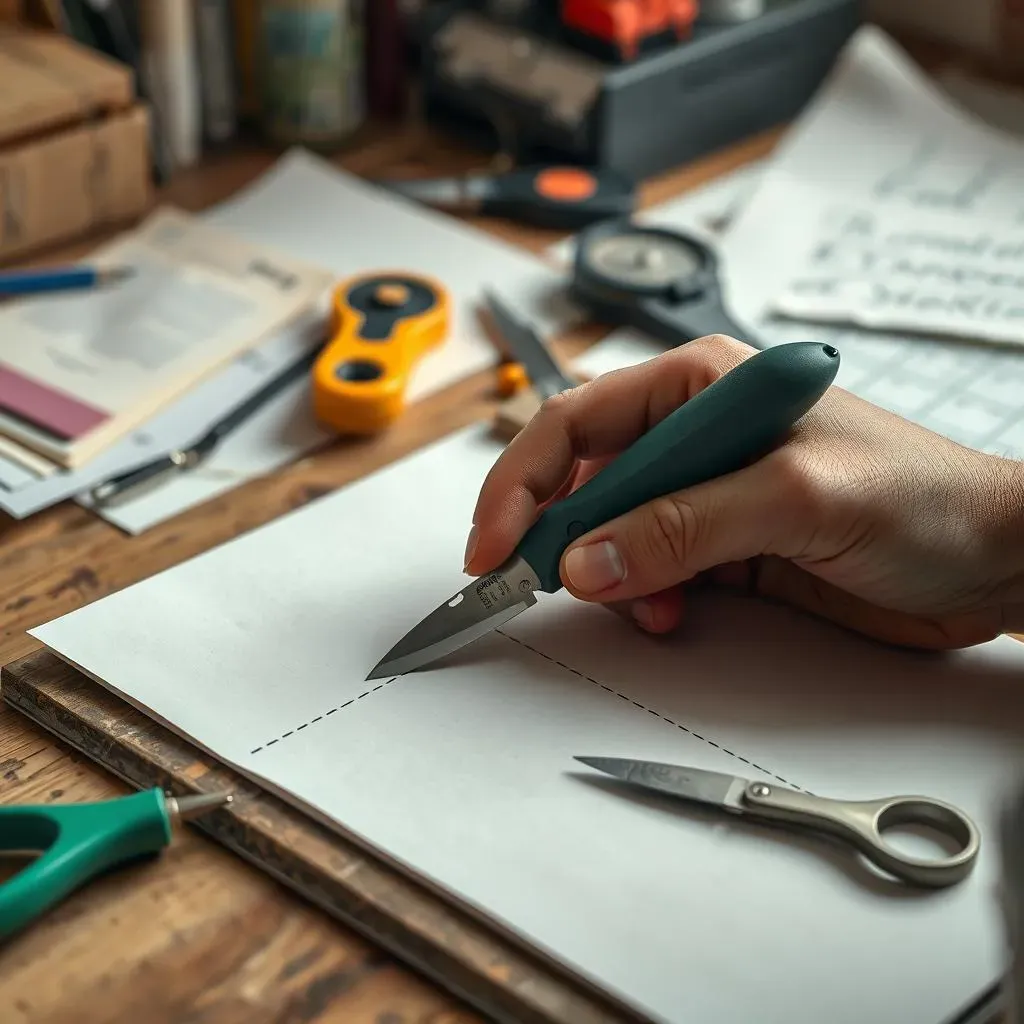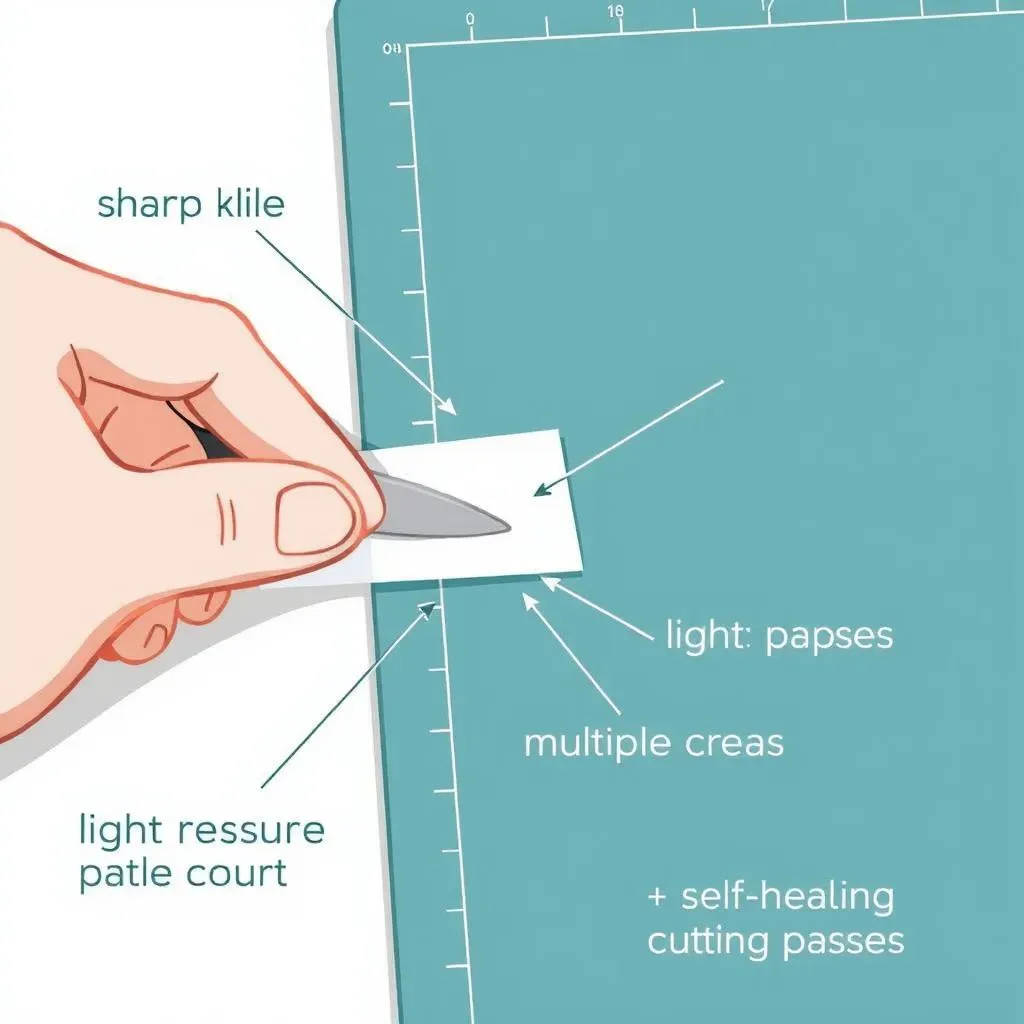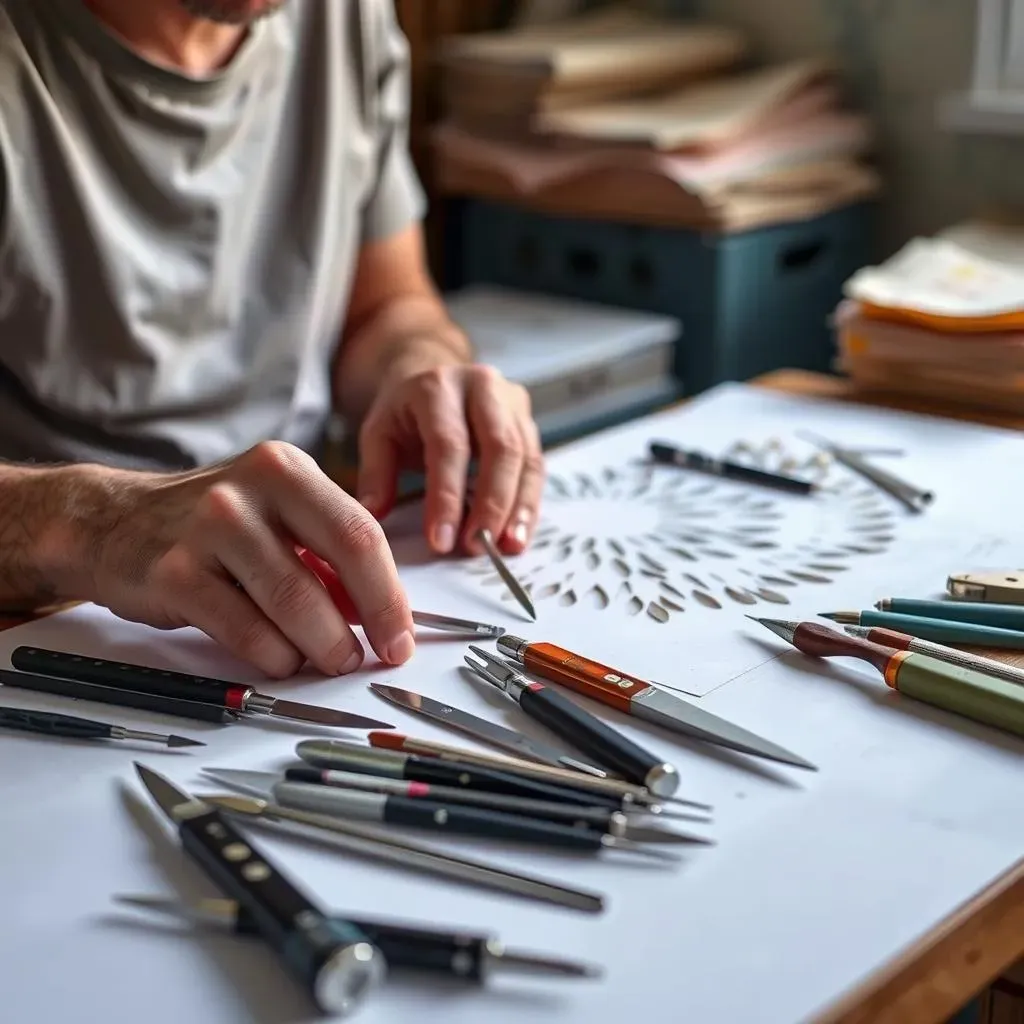Table of Contents
Ever tried cutting paper with dull scissors? It’s a disaster, right? Jagged edges, ripped pages, frustration galore! That’s where the magic of a good paper cutting knife comes in. It's not just for fancy art projects, it's a game-changer for anyone who works with paper. Whether you're into scrapbooking, card making, or just need to trim a document neatly, the right knife can make all the difference. In this article, I'm going to walk you through the world of paper cutting knives. We'll explore the different types and their uses, from basic craft knives to specialized swivel blades. You will learn some essential techniques that will help you achieve those super clean cuts and we'll look at what to consider when choosing the right knife for your specific projects. So, grab a cup of tea, settle in, and let's get cutting!
Types of Paper Cutting Knives and Their Uses
Types of Paper Cutting Knives and Their Uses
The Mighty Craft Knife
Okay, let's kick things off with the workhorse of the paper-cutting world: the craft knife. You know, the one that looks like a tiny scalpel? These are super common and for good reason. They're versatile, affordable, and great for a huge range of tasks. Think of them like the Swiss Army knife of paper cutting. They're awesome for making straight cuts, detailed shapes, and cleaning up edges, and the blades are usually replaceable, which is a total win. I remember when I first started, I used to go through blades like crazy, but it's all part of the learning curve, right?
Swivel Knives: The Smooth Operators
Next up are swivel knives. These are the rockstars for curves and intricate designs. The blade rotates as you move, which means you can make super smooth lines without having to constantly lift and reposition your knife. It's like the knife is dancing on the paper. I've seen some people create incredible swirling patterns and complex shapes with these, it's almost like watching magic. If you're into card making or any kind of project with curves, a swivel knife is going to be your new best friend. Trust me on this one, it will change your life.
Knife Type | Best Use | Skill Level |
|---|---|---|
Craft Knife | Straight lines, basic shapes, general cutting | Beginner to Advanced |
Swivel Knife | Curves, intricate designs, smooth lines | Intermediate to Advanced |
Rotary Cutter | Long straight cuts, fabric and paper | Beginner to Intermediate |
Specialty Knives for Specific Needs
Now, let's talk about the specialty tools. We have rotary cutters, which are amazing for long, straight cuts. They're like a pizza cutter for paper. Then there are paper guillotine knives. These are the big guns for cutting stacks of paper quickly and precisely. They're great if you are doing a lot of print work. Each of these specialized knives have their own place and can be incredibly useful when you need them. Just remember that like any tool, it's important to know what kind of job your doing before you pick the one you need.
Essential Techniques for Precision Paper Cutting Knife Work
Essential Techniques for Precision Paper Cutting Knife Work
The Importance of a Sharp Blade
First things first, let's talk about blades. A dull blade is your worst enemy when it comes to paper cutting. It's like trying to spread butter with a spoon – messy and frustrating. A sharp blade, on the other hand, will glide through the paper with minimal effort, giving you those clean, crisp edges you're after. It's worth investing in a good blade and learning how to change it regularly. Trust me, your fingers and your projects will thank you. I've lost count of how many times I've thought, "Oh, this blade is fine," only to end up with a mangled mess. Don't be like me!
Mastering the Art of the Cut
Now, let's get into the nitty-gritty of cutting. It's not just about hacking away at the paper. You want to use light pressure and multiple passes. Think of it like you are gently persuading the knife through the paper. If you push too hard, you're more likely to rip or tear the paper. It's all about control and finesse, not brute force. I always tell people to imagine they're a surgeon, performing delicate operation on a sheet of paper. It sounds silly, but it helps me focus. And remember, always cut on a good cutting mat to protect your work surface and extend the life of your blades.
Technique | Description | Why it Matters |
|---|---|---|
Sharp Blade | Using a new or freshly sharpened blade | Ensures clean cuts and reduces tearing |
Light Pressure | Applying gentle pressure rather than forcing the blade | Prevents tearing and allows for better control |
Multiple Passes | Cutting over the same line several times | Achieves deep cuts without applying too much force |
Choosing the Right Paper Cutting Knife for Your Projects
Choosing the Right Paper Cutting Knife for Your Projects
Alright, so you've got the basics down, you know about different types of knives and some essential techniques, but now comes the real question: how do you pick the right knife for *your* projects? It's like choosing the right paintbrush for a painting; you wouldn't use a tiny detail brush to paint a wall, would you? Same goes for paper cutting. If you're just trimming photos or cutting out simple shapes, a basic craft knife will work great. But if you're planning to tackle some super intricate designs, a swivel knife is going to be a much better choice. Think about the kind of projects you'll be doing most often and let that guide your decision. Don't feel like you have to buy every kind of knife at once. Start with one or two that fit your needs and expand your collection as you go.
Another factor to consider is the material you'll be cutting. Are you working with regular printer paper, thick cardstock, or maybe even delicate tissue paper? Different materials may require different types of blades or different amounts of pressure. For thicker materials, you might want a knife with a sturdier blade and a comfortable grip that won't tire your hand. For delicate materials, a very sharp blade and light pressure are key to avoiding tearing. It's all about matching the tool to the job. And if you're unsure, it's always a good idea to test on a scrap piece of paper before you commit to your final project. I can't tell you how many times I've saved myself from disaster by doing a quick test cut first.
Project Type | Recommended Knife | Why? |
|---|---|---|
Simple shapes, basic trimming | Craft Knife | Versatile and easy to use. |
Intricate designs, curves | Swivel Knife | Allows for smooth, continuous cuts. |
Long, straight cuts | Rotary Cutter | Provides clean, consistent lines. |
Cutting large stacks of paper | Paper Guillotine Knife | Efficient and precise for large quantities. |
Finally, think about your own comfort and preferences. Do you prefer a lightweight knife or a heavier one? Do you like a rubber grip or a metal one? It might sound silly, but the feel of the knife in your hand can make a big difference in how comfortable you are working with it. It's a personal choice, so try out a few different types if you can and see what feels best for you. And don't be afraid to experiment. You might find that you like using a certain knife for tasks that it isn't traditionally recommended for. The most important thing is to find tools that you enjoy using, so that paper cutting is fun and easy for you. After all, it's all about having fun and being creative!